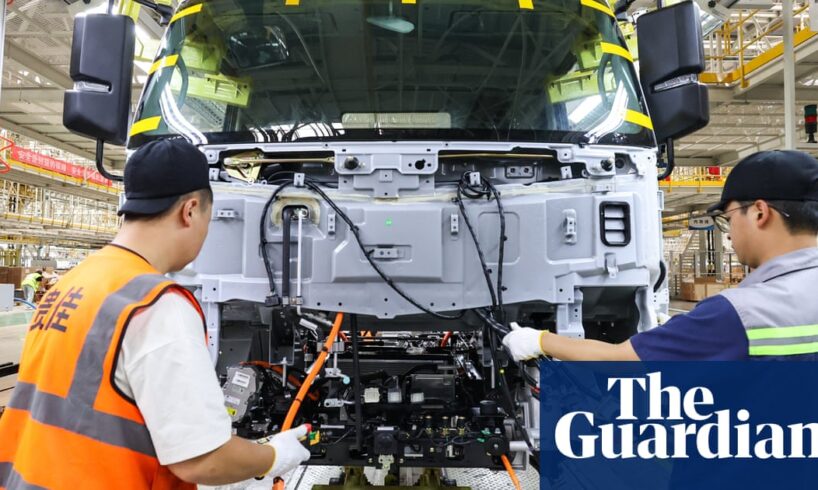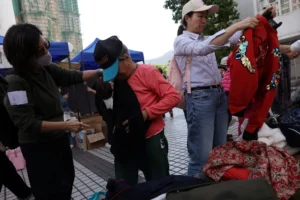
China’s economy grew more strongly than expected in the second quarter as it proved resilient in the face of Donald Trump’s trade war.
China’s gross domestic product (GDP) grew 5.2% in April to June compared with a year earlier, slowing from 5.4% in the first quarter, but just ahead of analysts’ expectations for a rise of 5.1%.
The world’s second largest economy has so far avoided a sharp slowdown in part due to support by Beijing and as factories took advantage of a US-China trade truce to make shipments before tariffs kicked in, or “front-loading”.
However, investors are bracing for a weaker second half as exports lose momentum, prices continue to fall, and consumer confidence remains low.
Last month, the US and China extended the truce after two days of talks in London that resulted in a “framework” deal over export restrictions on rare earths and semiconductors.
Washington and Beijing have until 12 August to renew that deal or face a return to the staggering bilateral tariffs that risked introducing a virtual embargo on trade between the world’s two biggest economies.
China’s economy is heavily dependent on exports, and the US is its biggest market. In recent years, companies have moved their supply chains outside China in an attempt to avoid tariffs, and Chinese businesses have also been developing non-US markets. But no country can replace the purchasing power of US consumers.
The trade war has spread into non-tariff measures, such as restrictions on rare earths exports, causing manufacturing slowdowns for western carmakers.
China’s policymakers face a daunting task in achieving the annual growth target of about 5% – a goal many analysts view as ambitious given entrenched deflation and weak demand at home.
Wei Yao, an economist at Société Générale, said: “Despite a strong first half, the outlook is set to sour in [the second half of the year] as export front-loading fades and the impact of US tariffs becomes more visible.
“Renewed weakness in house prices and the fading impact of subsidies also cast doubt over the sustainability of the consumption recovery.”
Indeed, the solid headline GDP numbers held little sway for most households including Mallory Jiang, a 30-year-old doctor in the southern tech hub Shenzhen, who told Reuters she and her husband had pay cuts this year.
“Both our incomes as doctors have decreased, and we still don’t dare buy an apartment. We are cutting back on expenses: commuting by public transport, eating at the hospital cafeteria or cooking at home. My life pressure is still actually quite high.”
skip past newsletter promotion
Sign up to Business Today
Get set for the working day – we’ll point you to all the business news and analysis you need every morning
Privacy Notice: Newsletters may contain info about charities, online ads, and content funded by outside parties. For more information see our Privacy Policy. We use Google reCaptcha to protect our website and the Google Privacy Policy and Terms of Service apply.
after newsletter promotion
On a quarterly basis, GDP grew 1.1% in April to June, the National Bureau of Statistics data showed, compared with a forecast 0.9% increase and a 1.2% gain in the previous quarter.
Investors are closely watching for signs of fresh stimulus at the upcoming politburo meeting due in late July, which is likely to shape economic policy for the remainder of the year.
Beijing has ramped up infrastructure spending and consumer subsidies, alongside monetary easing. In May, the central bank cut interest rates and injected liquidity as part of broader efforts to cushion the economy from US tariffs.
Some analysts believe the government could increase deficit spending if growth slows sharply.
Reuters contributed to this report.





